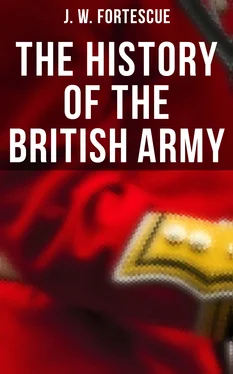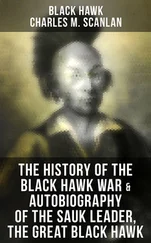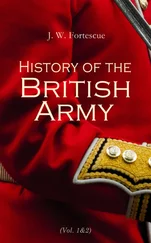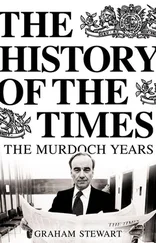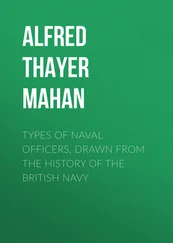J. W. Fortescue
The History of the British Army
Complete Edition
Published by

Books
- Advanced Digital Solutions & High-Quality eBook Formatting -
musaicumbooks@okpublishing.info
2020 OK Publishing
EAN 4064066393557
Volume 1 Volume 1 Table of Contents
Volume 2
Table of Contents Table of Contents Volume 1 Volume 1 Table of Contents Volume 2
BOOK I BOOK I Table of Contents
CHAPTER I
CHAPTER II
CHAPTER III
CHAPTER IV
CHAPTER V
BOOK II
CHAPTER I
CHAPTER II
CHAPTER III
CHAPTER IV
CHAPTER V
CHAPTER VI
CHAPTER VII
BOOK III
CHAPTER I
CHAPTER II
CHAPTER III
CHAPTER IV
CHAPTER V
BOOK IV
CHAPTER I
CHAPTER II
BOOK V
CHAPTER I
CHAPTER II
CHAPTER III
CHAPTER IV
BOOK VI
CHAPTER I
CHAPTER II
CHAPTER III
CHAPTER IV
CHAPTER V
CHAPTER VI
CHAPTER VII
CHAPTER VIII
CHAPTER IX
CHAPTER X
CHAPTER XI
FOOTNOTES:
Table of Contents
Table of Contents
The history of the British Army is commonly supposed to begin with the year 1661, and from the day, the 14th of February, whereon King Charles the Second took over Monk's Regiment of Foot from the Commonwealth's service to his own, and named it the Coldstream Guards. The assumption is unfortunately more convenient than accurate. The British standing army dates not from 1661 but from 1645, not from Monk's regiment but from the famous New Model, which was established by Act of the Long Parliament and maintained, in substance, until the Restoration. The continuity of the Coldstream regiment's existence was practically unbroken by the ceremony of Saint Valentine's day, and this famous corps therefore forms the link that binds the New Model to the Army of Queen Victoria.
But we are not therefore justified in opening the history of the army with the birth of the New Model. The very name indicates the existence of an earlier model, and throws us back to the outbreak of the Civil War. There then confronts us the difficulty of conceiving how an organised body of trained fighting men could have been formed without the superintendence of experienced officers. We are forced to ask whence came those officers, and where did they learn their profession. The answer leads us to the Thirty Years' War and the long struggle for Dutch Independence, to the English and Scots, numbered by tens, nay, hundreds of thousands, who fought under Gustavus Adolphus and Maurice of Nassau. Two noble regiments still abide with us as representatives of these two schools, a standing record of our army's 'prentice years.
But though we go back two generations before the Civil War to find the foundation of the New Model Army, it is impossible to pause there. In the early years of Queen Elizabeth's reign we are brought face to face with an important period in our military history, with a break in old traditions, an unwilling conformity with foreign standards, in a word, with the renascence in England of the art of war. For there were memories to which the English clung with pathetic tenacity, not in Elizabeth's day only but even to the midst of the Civil War, the memories of King Harry the Fifth, of the Black Prince, of Edward the Third, and of the unconquerable infantry that had won the day at Agincourt, Poitiers, and Creçy. The passion of English sentiment over the change is mirrored to us for all time in the pages of Shakespeare; for no nation loves military reform so little as our own, and we shrink from the thought that if military glory is not to pass from a possession into a legend, it must be eternally renewed with strange weapons and by unfamiliar methods. This was the trouble which afflicted England under the Tudors, and she comforted herself with the immortal prejudice that is still her mainstay in all times of doubt,
"I tell thee herald,
I thought upon one pair of English legs
Did march three Frenchmen."
The origin of the new departures in warfare must therefore be briefly traced through the Spaniards, the Landsknechts, and the Swiss, and the old English practice must be followed to its source. Creçy gives us no resting-place, for Edward the Third's also was a time of military reform; the next steps are to the Battle of Falkirk, the Statute of Winchester, and the Assize of Arms; and still the English traditions recede before us, till at last at the Conquest we can seize a great English principle which forced itself upon the conquering Normans, and ultimately upon all Europe.
This then is the task that is first attempted in this book: to follow, however briefly and imperfectly, the growth of the English as a military power to the time of its first manifestation at Creçy, and onward to the supreme day of Agincourt; then through the decay under the blight of the Wars of the Roses to the revival under the Tudors, and to the training in foreign schools which prepared the way for the New Model and the Standing Army. The period is long, and the conditions of warfare vary constantly from stage to stage, but we shall find the Englishman, through all the changes of the art of war unchangeable, a splendid fighting man.
The primitive national army of the English, as of other Teutonic nations, consisted of the mass of free landowners between the ages of sixteen and sixty; it was called in the Karolingian legislation by the still existing name of landwehr , and known in England as the fyrd. Its term of service was fixed by custom at two months in the year. The force was reorganised by King Alfred or by his son through the division of the country into military districts, every five hides of land being required to provide an armed man at the king's summons, and to provide him with victuals and with pay. Further, all owners of five hides of land and upwards were required to do thane's service, that is to say, to appear in the field as heavily-armed men at their own charge, and to serve for the entire campaign. The organisation of the thanes was by shires. With the conquest of England by Canute a new military element was introduced by the establishment of the royal body-guard, a picked force of from three to six thousand Danish troops, which were retained by him after the rest of the army had been sent back to Denmark, and were known as the house-carles.
It was with an army framed on this model—the raw levies of the fyrd and the better trained men of the body-guard—that King Harold, flushed with the victory of Stamford Bridge, marched down to meet the invasion of William of Normandy. The heavily-armed troops wore a shirt of ringed or chain-mail, and a conical helmet with a bar protecting the nose; their legs were swathed in bandages not wholly unlike the "putties" of the present day, and their arms were left free to swing the Danish axe. They carried also a sword, five missile darts, and a shield, but the axe was the weapon that they loved, for the Teutonic races, unlike the Latin, have ever preferred to cut rather than to thrust. The light-armed men, who could not afford defensive armour, came into the field with spear and shield only. Yet the force was homogeneous in virtue of a single custom, wherein lies the secret of the rise of England's prowess as a military nation. Though the wealthy thanes might ride horses on the march, they dismounted one and all for action, and fought, even to the king himself, on their own feet. [2]
Читать дальше
